The Angolan python (Python anchietae) is a fairly rare snake from Southwestern Africa. Here are some facts about these rare snakes.
1. They are found in Angola and Namibia
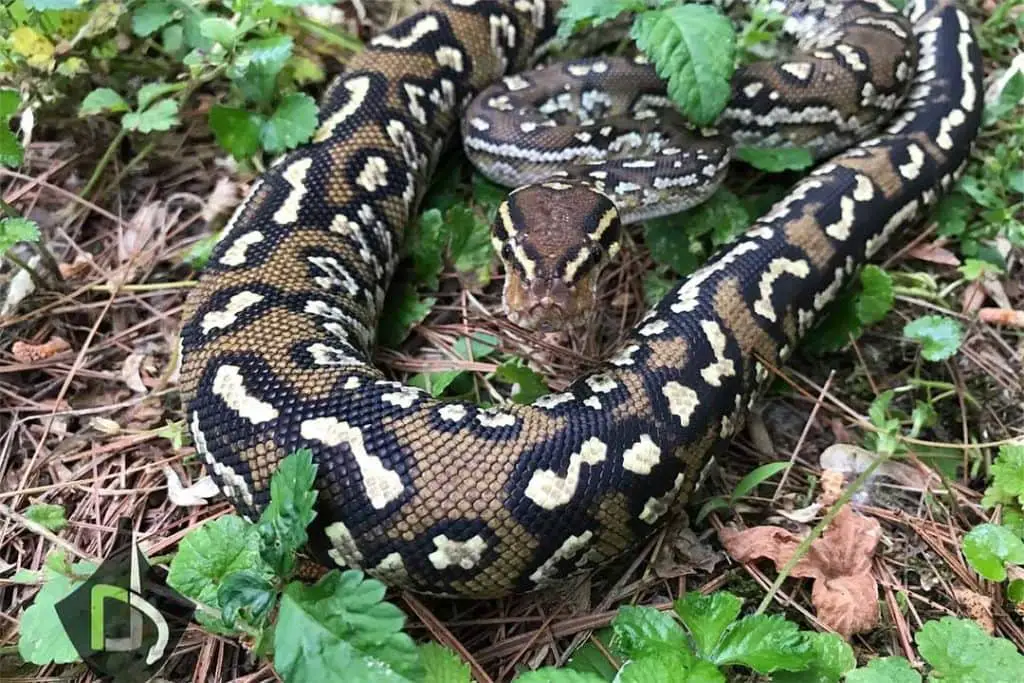
The Angolan python can be found in southwestern Angola and northwestern Namibia. They live in a fairly narrow range, but they are widespread in the area.
Most of their range is in arid areas that are rarely accessed by humans. This means they are rarely collected in the wild, but an increase in demand for wild snakes could put them at risk.
Currently, they are considered to be of least concern since they are widespread over their historic range
2. Angolan Pythons are rarely Studied
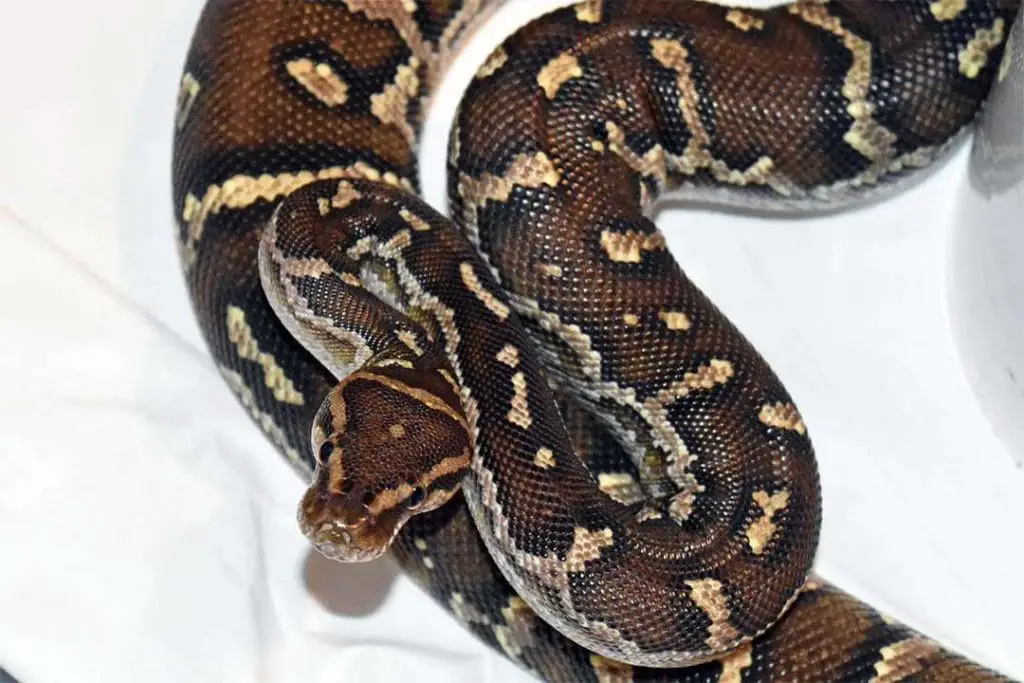
Since these snakes are found primarily far away from human populations, these snakes are poorly understood.
They are fairly rare in captivity and in zoo collections.
There was also a civil war in Angola from 1975 to 2002 that made studying and collecting this species difficult.
3. They Have Beaded Scales
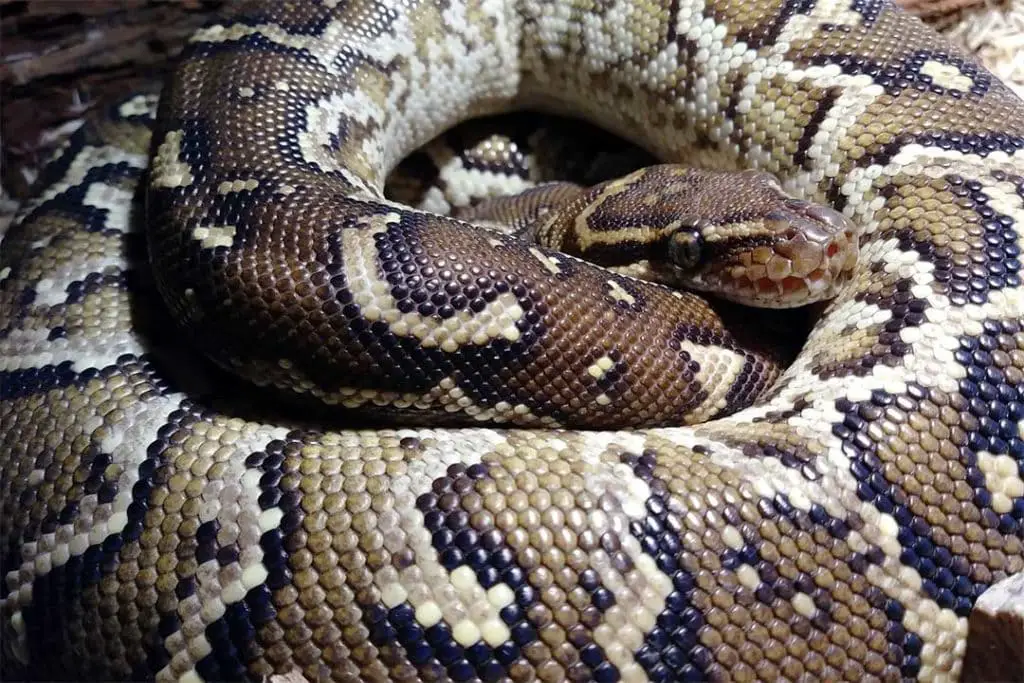
Most snakes have either smooth scales or a small ridge down the middle. When you handle a snake, you will notice that it feels very smooth. However, the Angolan python has beaded scales.
This is most noticeable on the face. If you have the chance to handle one, you will notice that its dorsal scales have a bumpy feel and the ventral scales are smooth.
This is an adaptation to desert life. This scale shape can help collect condensation and keep the animal hydrated. This adaptation is more commonly seen in lizards.
4. The Angolan Python Is The Rarest Snake in Africa
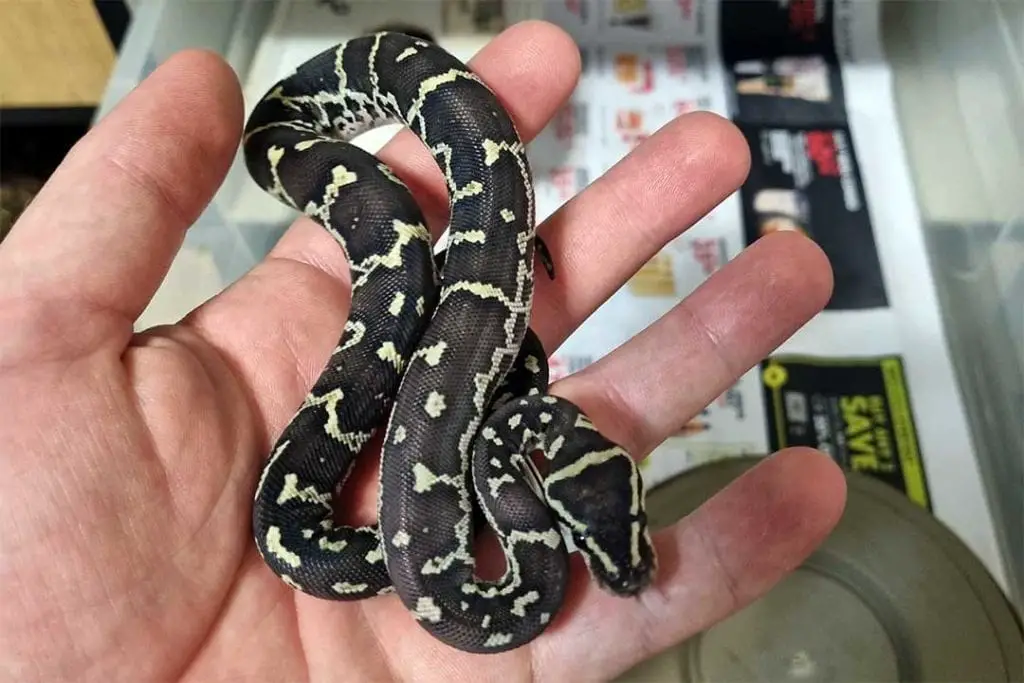
Since they live in a narrow range compared to other African snake species, this is one of the rarest species on the continent. They are rarely seen and rarely studied in their native habitat.
5. They Not Venomous
Like all pythons, the Angolan python does not have venom. They subdue prey by striking a prey animal and biting it. Then, the snake quickly coils around the prey and begins to squeeze. This cuts off blood flow and causes rapid death.
6. They Are Primitive Snakes
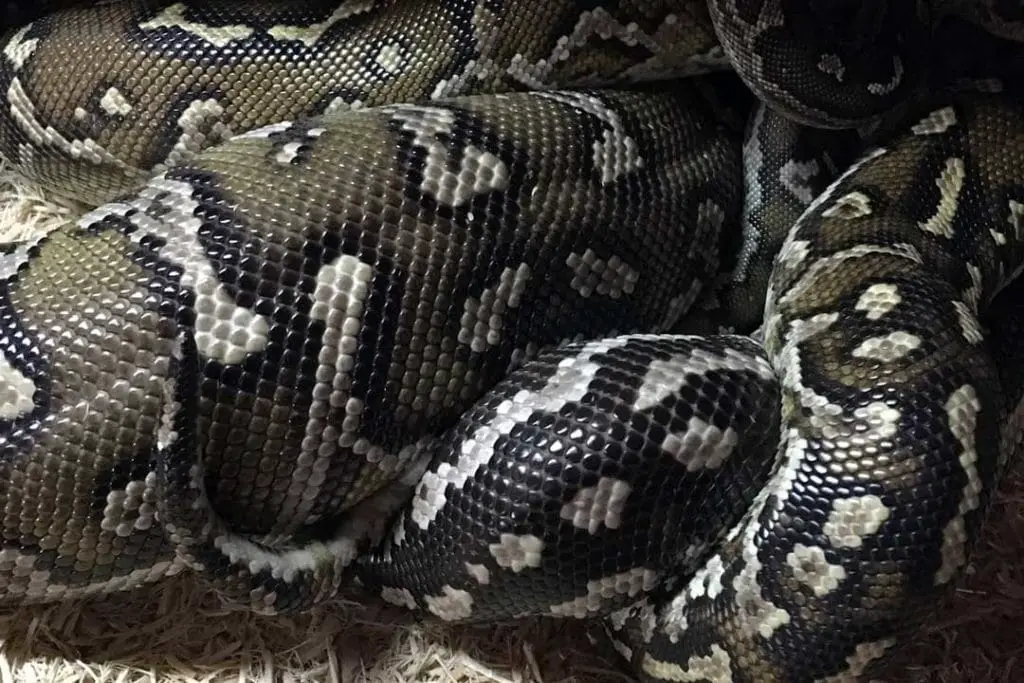
Pythons are considered to be primitive snakes. For instance, Angolan pythons have spurs near their cloaca, the all-purpose orifice.
These spurs are used during mating, and they are connected to the remains of the pelvis. This makes them vestigial limbs. They also have two functional lungs.
Most other snake species have one vestigial lung and one lung that is extended further down the body.
7. Angolan Pythons Lay Eggs
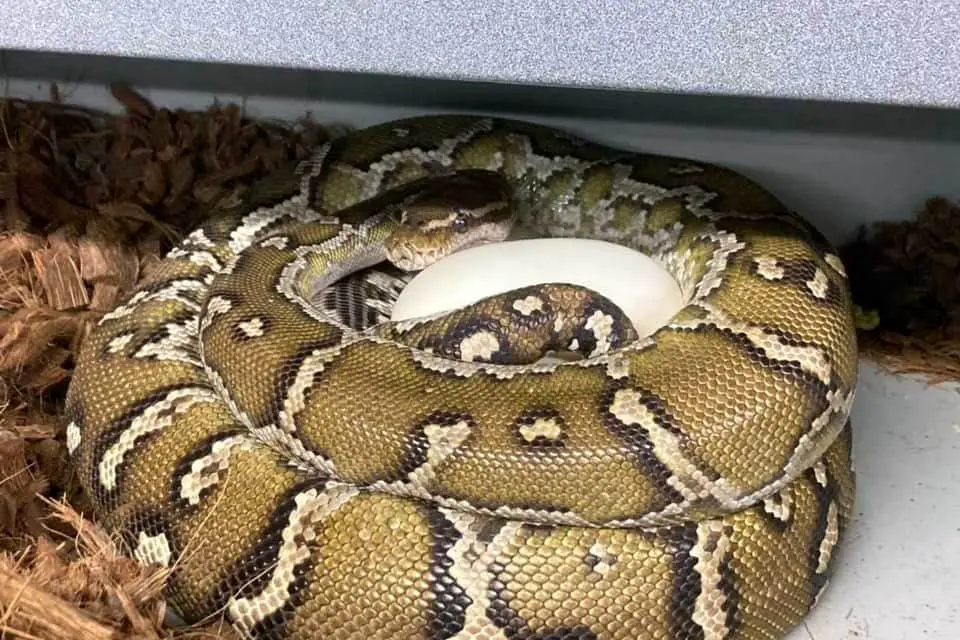
Like all pythons, Angolan pythons lay eggs.
They typically only lay 4-5 eggs. This is a very small clutch size for a python since the closely related ball python can produce up to 11 eggs in one clutch.
It is unknown if Angolan pythons incubate their eggs as related pythons do. Most python species will curl around their eggs to incubate them.
8. Curious Personality
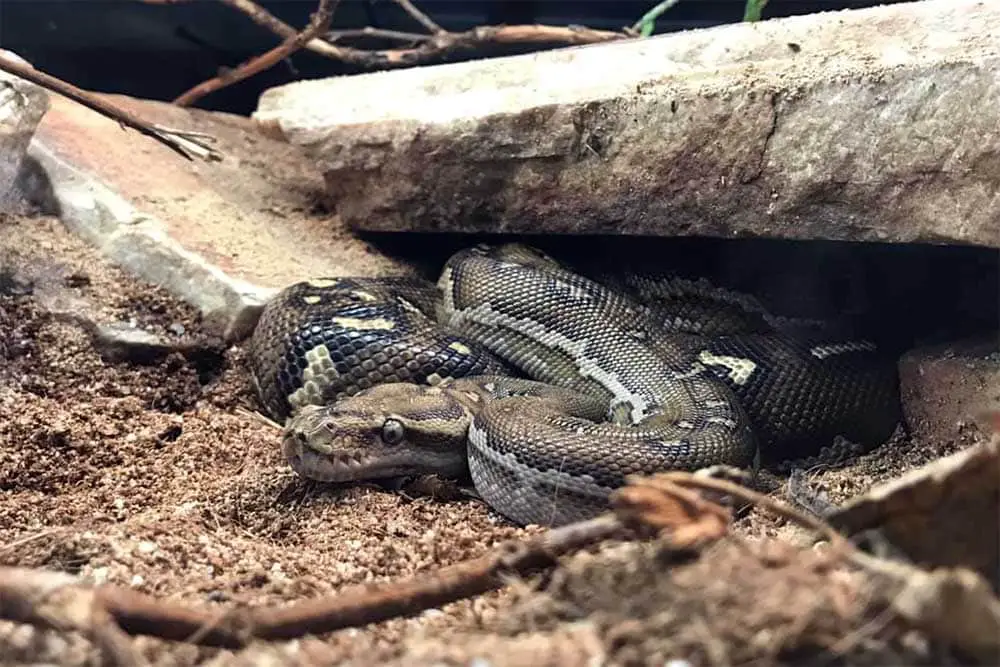
While Angolan pythons look very similar to the closely related ball python, there are a number of differences between the two species. Ball pythons are known for being shy snakes.
They tend to only be active for short periods of time unless they are hunting. Angolan pythons are much more active. They tend to explore their enclosures far more.
They also tend to be bolder and more curious than ball pythons. Most Angolan pythons enjoy a chance to explore their surroundings during handling sessions, though some individuals will prefer to be left alone.
9. Defensive Behavior
If you are used to owning ball pythons, you may assume that an Angolan python has similar defensive behaviors. This is not the case. Angolan pythons are known for being calm as adults, but defensive as babies.
Ball pythons will typically ball up when frightened. A frightened Angolan python will eliminate and bite, particularly when young.
Within a few years, most Angolan pythons will relax and tolerate handling well.
10. Found Under Ledges
In their native habitat, Angolan pythons are typically found resting under ledges and rocks. This helps protect them from the heat of their native environment.
These ledges also offer protection from predators. Finally, the humidity is typically higher under ledges. Hiding under humid ledges helps keep Angolan pythons hydrated in their arid environment.
11. Survives Extreme Temperatures
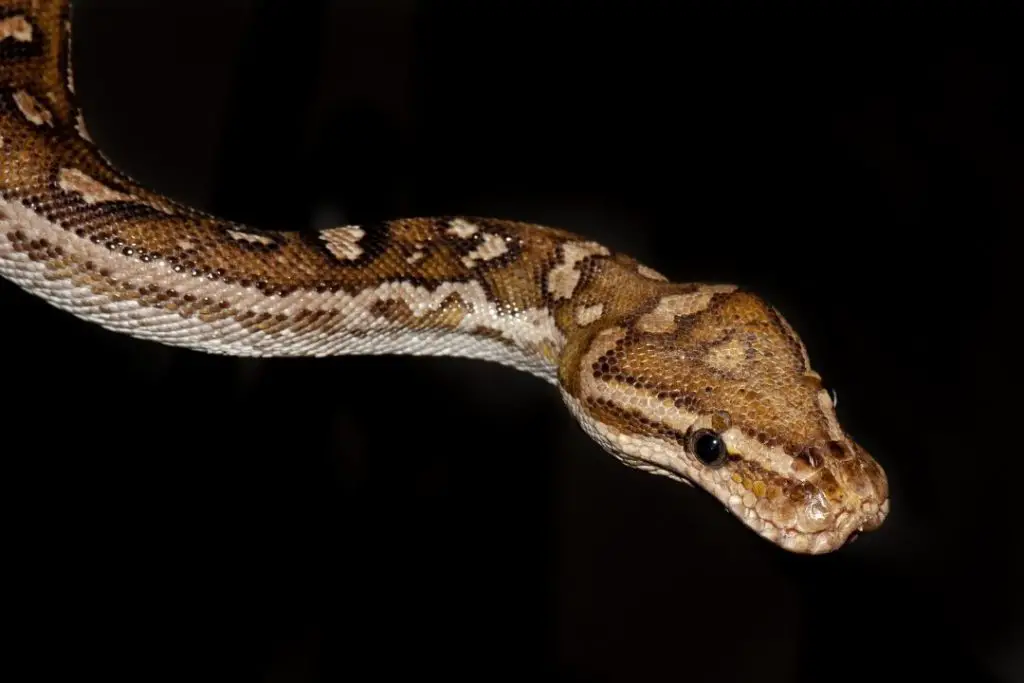
Angolan pythons can survive a wide range of temperatures. They can survive freezing temperatures down to 32 degrees Fahrenheit all the way up to 122 degrees.
While they may not be active, Angolan pythons can survive much higher and lower temperatures for brief periods. They only thrive in a small range of temperatures, however. In captivity, they stay between 75 and 90 degrees to keep the snake healthy and digesting well.
12. Terrestrial Prey
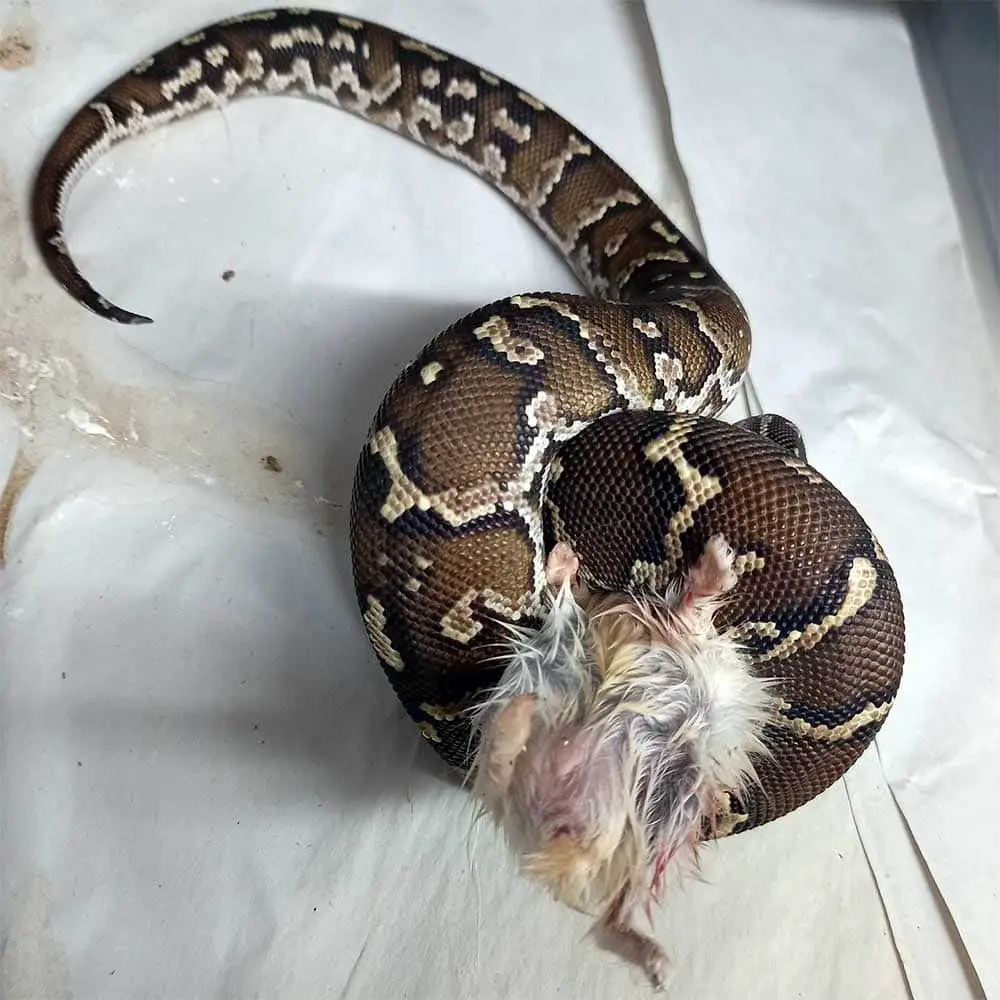
Angolan pythons primarily feed on mammals and birds. They are not big climbers, so they mostly eat animals found on the ground. Young snakes target smaller prey including the occasional insect.
13. Heat-Sensing
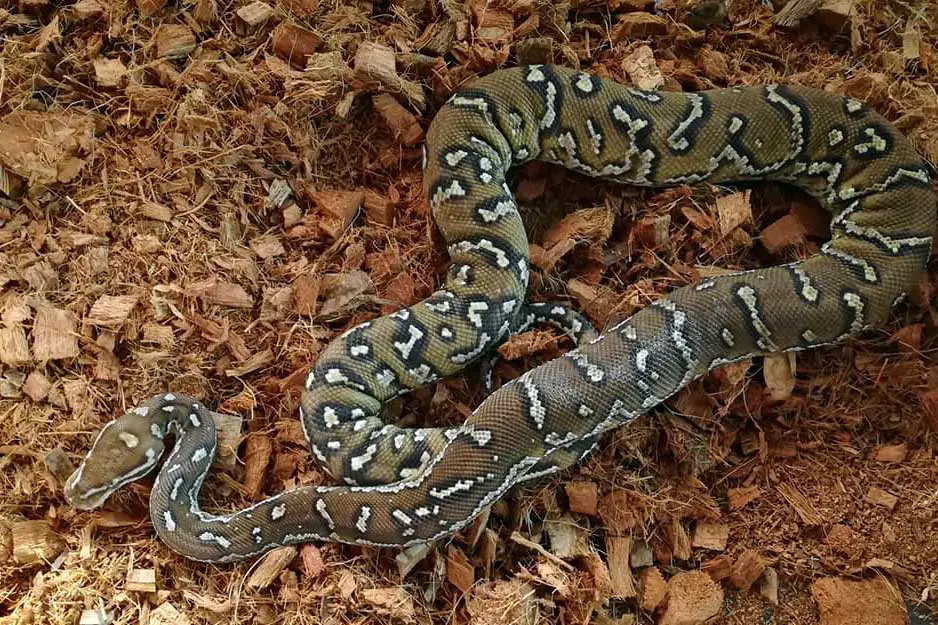
If you look at the face of an Angolan python, you will notice five pits set around the mouth of the snake.
These are called labial pits. Under these specialized scales lie heat-receptive organs that allow this species to sense warm-blooded prey. This allows the snake to hunt even in low-light conditions.
14. Small Snakes
Angolan pythons are very small compared to related pythons. They max out at 6 feet. This makes them around the same size as ball pythons.
Conclusion
These rare snakes are truly unique among the pythons. If you have any questions about this species, please leave a comment below.
If you have ever encountered one or are lucky enough to own one, please leave your thoughts on the species in the comment section below.
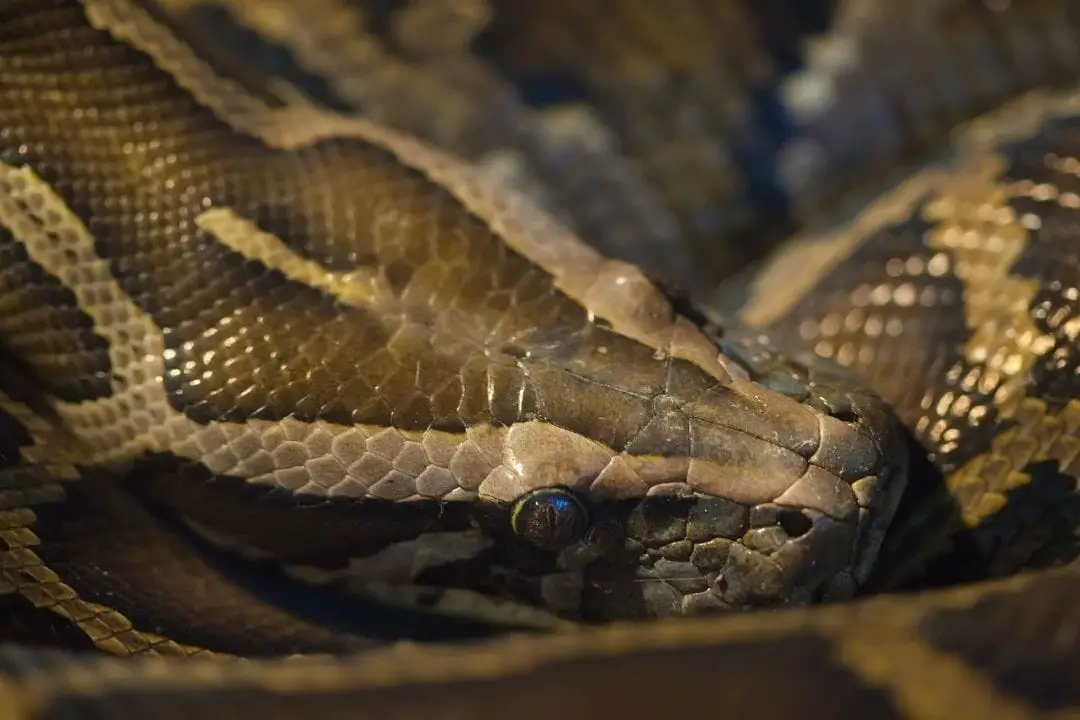
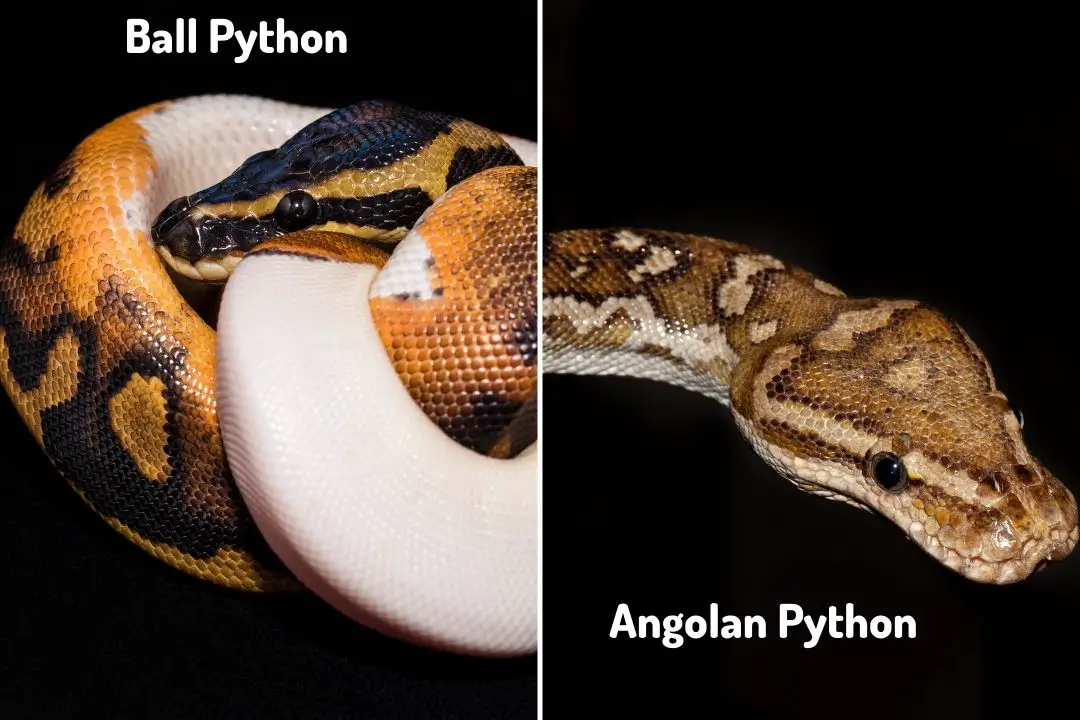
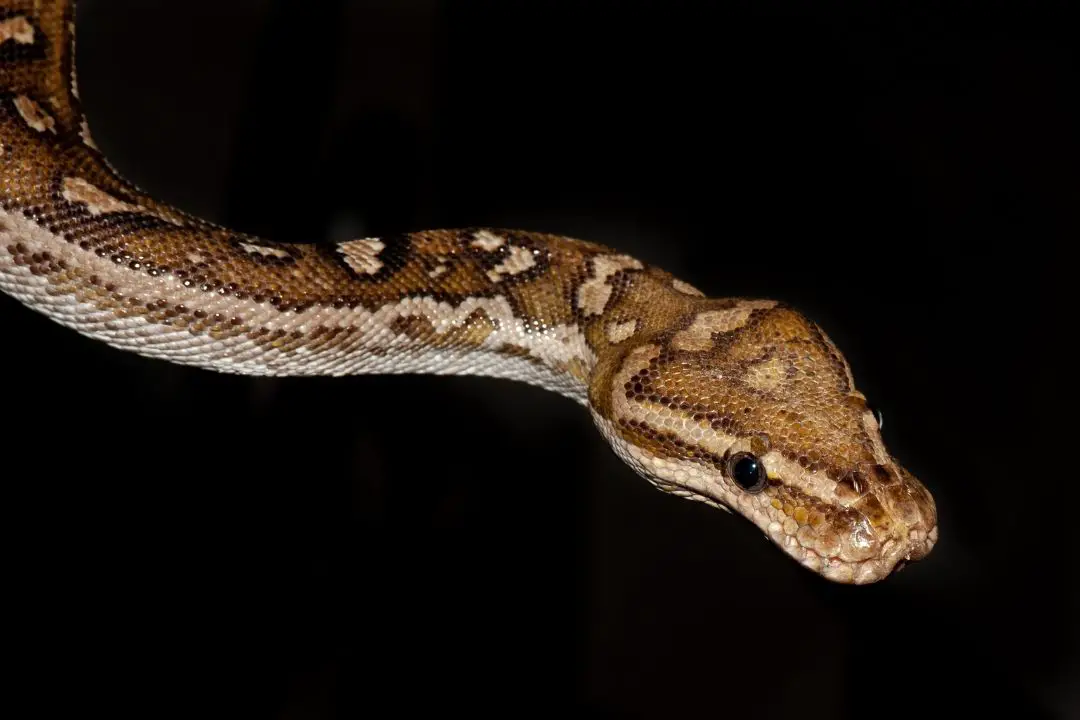
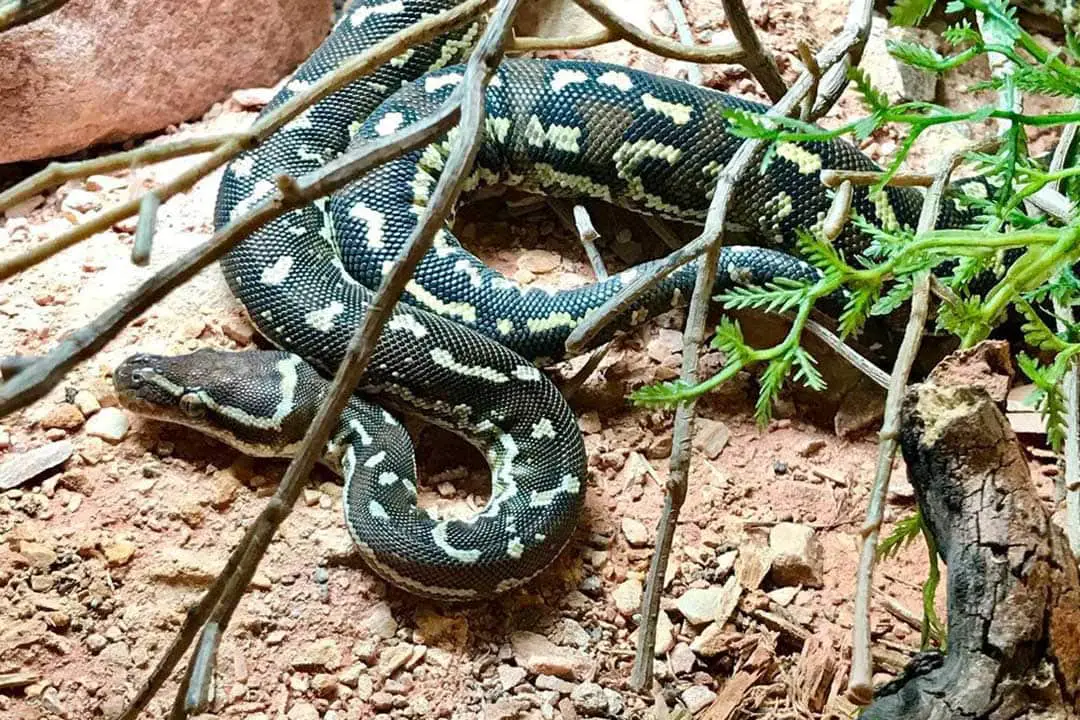

We’ve owned Angolan Pythons for 10 years and produced them. They are what I would call the colubrid of pythons. Such an easy, laid back species to work with. No other python compares to the Angolan. They are slow growers though and should never be power fed as this will kill an Angolan due to the two working lungs. Amazing animals! Our favorite Python!